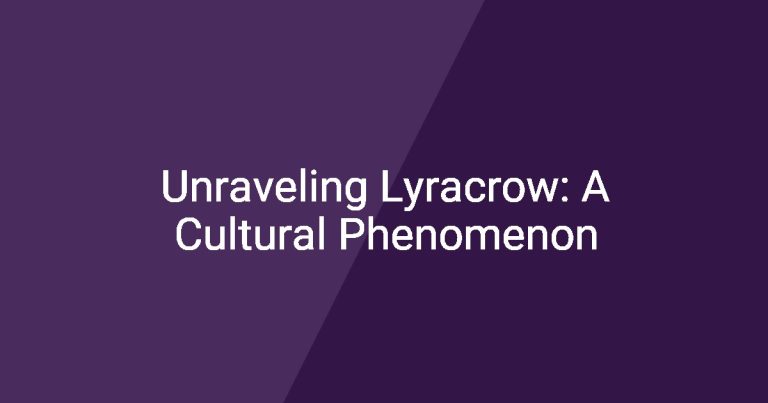One term gaining traction in contemporary film culture is movietuls. This intriguing concept blends the traditional film experience with new-age storytelling, captivating audiences worldwide. The purpose of this article is to delve deep into the essence of movietuls, exploring their history, characteristics, cultural impact, and their potential future in the ever-evolving landscape of cinema. Understanding movietuls is crucial for appreciating modern storytelling techniques, how they resonate with viewers, and their broader implications within the entertainment industry.
History of Movietuls
Emergence of the Concept
Movietuls emerged as a new genre, characterized by their unique narratives and production styles. The term is believed to have originated in the early 2000s, coinciding with the rise of digital platforms that provided filmmakers with more creative freedom. Early experiments in merging traditional cinematic techniques with interactive storytelling laid the groundwork for what would become known as movietuls.
Key events that significantly shaped the rise of movietuls included the explosion of online streaming platforms. Websites like Netflix and YouTube allowed independent filmmakers to showcase their work, leading to a democratization of the film process. Influential figures such as innovative directors and screenwriters began to explore storytelling that combined different media forms, further solidifying the concept of movietuls.
Evolution Over Time
The understanding of movietuls has evolved dramatically since their inception. Initially defined as simple digital films, movietuls have grown to encompass a variety of formats, including interactive experiences that engage the audience beyond the traditional film narrative. The rise of advanced technology, including artificial intelligence and virtual reality, has reshaped the parameters of movietuls.
Notable milestones in the movietuls journey include award-winning projects like “Bandersnatch,” a Netflix interactive film that allowed viewers to dictate the storyline. Such projects illustrate how movietuls leverage technology to create engaging narratives.
Movietuls in Modern Cinema
Definition and Characteristics
So, what constitutes a movietul? At its core, a movietul is characterized by its integration of storytelling techniques that surpass the boundaries of conventional films. Common themes often include the exploration of identity, the effects of technology on society, and new takes on classic narratives.
Additional characteristics distinguishing movietuls from traditional films include viewer interactivity and multi-platform distribution. Unlike traditional narratives, which typically have a linear flow, movietuls often invite audience participation and engagement, leading to varied experiences.
Notable Examples of Movietuls
Over the years, several iconic movietuls have captured the public’s imagination. One standout example is the animated feature “Into the Spider-Verse,” which has been praised for its innovative visual style and engaging narrative structure.
Another important entry in the world of movietuls is “The Irishman,” which blends traditional film storytelling with new technology to reinterpret historical events. Its success at the box office, coupled with critical acclaim, showcases how movietuls can push the envelope in modern cinema.
A case study of the interactive experience “Bandersnatch” reveals how it blends various genres and invites viewer decision-making, reinforcing the effectiveness of the movietul format.
The Cultural Impact of Movietuls
Audience Reception
Audiences engage with movietuls in uniquely dynamic ways compared to traditional films. Viewership analytics demonstrate that younger demographics, in particular, are drawn to movietuls because of their interactive nature. Research has shown that social media plays a definitive role in the promotion and discussion of movietuls, enabling fans to engage in conversations around their experiences.
The demographic landscape for movietul viewers tends to skew younger, particularly among those who grew up with technology. Social media platforms like TikTok and Instagram are instrumental in creating buzz around new releases, influencing viewer perceptions and drawing in wider audiences.
Influences on Other Media
The impact of movietuls extends beyond cinema, influencing television and streaming platforms. The advent of binge-watching culture parallels the way movietuls are consumed, leading networks to re-examine narrative structures in series production.
Notably, video games have also begun to integrate movietul storytelling techniques, creating rich narratives that allow players to experience the story interactively. Furthermore, the concept has inspired literature and art, leading to a burgeoning category of works that reflect movietul characteristics in non-film formats.
The Future of Movietuls
Trends to Watch
As we look to the future of movietuls, several key trends are emerging. Upcoming movietuls are expected to focus significantly on innovation, particularly in areas like viewer interactivity and diverse storytelling. The growth of international movietuls is particularly promising, with filmmakers from different cultural backgrounds sharing their unique perspectives and narratives.
Sustainability is another critical factor shaping the future of movietuls. With an increasing emphasis on environmentally responsible production practices, filmmakers are attempting to create films that resonate both culturally and ecologically, paving the way for a more sustainable movietul industry.
Challenges Faced by Movietuls
Despite their growing popularity, movietuls face considerable challenges. The competition with traditional films is intense, as many viewers remain loyal to familiar storytelling formats. Additionally, navigating the rapid changes in viewer habits, particularly with regard to content consumption, presents ongoing hurdles for movietuls.
Representation and diversity also remain pressing issues. The movietul movement must strive to address these challenges and ensure that a wide array of voices and experiences is reflected in their narratives.
Conclusion
In summary, movietuls represent an exciting and transformative shift in cinema, enabling filmmakers to explore innovative storytelling techniques in a rapidly changing landscape. By understanding the significance of movietuls, we can appreciate their role in shaping the future of film. Audiences are encouraged to explore and support movietuls as they continue to navigate the evolving cinematic world.
Table Summary of Movietuls Characteristics
| Characteristic | Description |
|---|---|
| Interactivity | Audiences can influence the story outcome. |
| Multimedia Integration | Combines different media formats, e.g., video games and film. |
| Themes | Exploration of identity, technology, and cultural narratives. |
| Global Influence | International filmmakers contribute diverse perspectives. |
| Technological Integration | Uses advanced technologies like AI and VR. |
Frequently Asked Questions (FAQs)
What are movietuls?
Movietuls are modern films characterized by interactive storytelling and innovative narrative structures that engage viewers differently than traditional cinema.
How did movietuls originate?
The term originated in the early 2000s with the rise of digital platforms, allowing filmmakers to experiment with narratives beyond conventional storytelling.
Can you provide examples of movietuls?
Some notable examples include “Bandersnatch,” “Into the Spider-Verse,” and “The Irishman,” each showcasing unique narrative techniques.
How do audiences engage with movietuls?
Audiences often engage through interactive elements and discussions on social media, which enhances their viewing experience.
What trends are shaping the future of movietuls?
Key trends include international collaborations, sustainability in production practices, and the integration of advanced technology in storytelling.
Are movietuls impacting other media?
Yes, movietuls influence television content, gaming narratives, and even literature and art, reflecting broader cultural shifts.
What challenges do movietuls face?
Challenges include competition with traditional films, changing viewer habits, and addressing representation and diversity in storytelling.
How can audiences support movietuls?
Audiences can support movietuls by exploring diverse releases, sharing their experiences on social media, and advocating for innovative storytelling in cinema.
What is the significance of movietuls in modern cinema?
Movietuls embody a new wave of storytelling that reflects changes in technology, culture, and audience preferences, shaping the future of film-making.
References
– To learn more about the evolution of movietuls and their influence, visit [Film Threat](https://www.filmthreat.com) and [IndieWire](https://www.indiewire.com) for in-depth articles and analyses on the subject.







